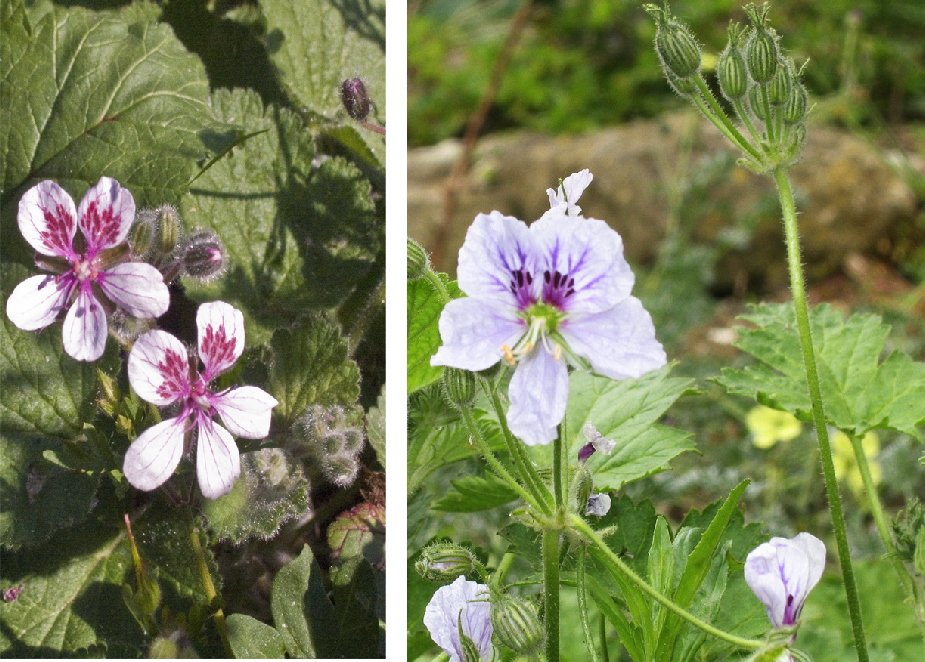Erodium pelargonifolium or Erodium trifolium.
These two species have suffered confusion for many years, since a photo of Erodium trifolium was wrongly labelled Erodium pelargoniflorum in a gardening magazine. Plants of Erodium trifolium are commonly available in nurseries, but are always labelled Erodium pelargoniflorum. Here we look at the two species and discuss the differences between them.
Erodium pelargoniflorum Boiss. et Heldr. is a species from Turkey (Konya and Isparta provinces), growing in in shady rocky places and the mouths of caves in the mountains of Ghelipel above Ermenk in Cilica Trachaea on limestone rock at 900-1500m. Its leaves are mostly from the caudex and are long ovate in shape, little lobed with crenate margins, a yellow green in colour, rather shiny with no, or a few, hairs and sticky. The annual flowering stems are short with few leaves, with umbels of 6 to 8 flowers. The flowers are about 3 cm across, white or pale mauve, the upper two petals have a large corona shaped mark of three colours with light pink or purple rays (veins). The flowers and beaks tend to face downward. The sepals have an obvious mucro of 2.5 mm. The rostrum is about 3 cm, the mericarp has a small inconspicuous foveole.
Erodium trifolium (Cav.) Cav. is from north Africa – Algeria, Morocco, Tunisia. It has leaves at the caudex, but also on the flowering stems. Leaves are hairy, ovate to triangular, usually deeply 3-lobed but juvenile leaves entire, and margins are crenate. Flowering stems are long and leafy, rambling to 35cm, carrying axillary umbels of 4-11 flowers. Petals are white, rounded, not overlapping, upper 2 with a small blotch of one colour, above the base, composed of purple-brown oval spots. The sepal has a very short mucro. The rostrum is 3-3.5cm, the mericarp has a large foveole, with a fold beneath, the foveole has capitate glands
Erodium trifolium is easy to grow, easy to propagate from seed and produces large quantities of seed - a nurseryman's dream.
Erodium pelargoniflorum is less easy to grow and produces few seeds
